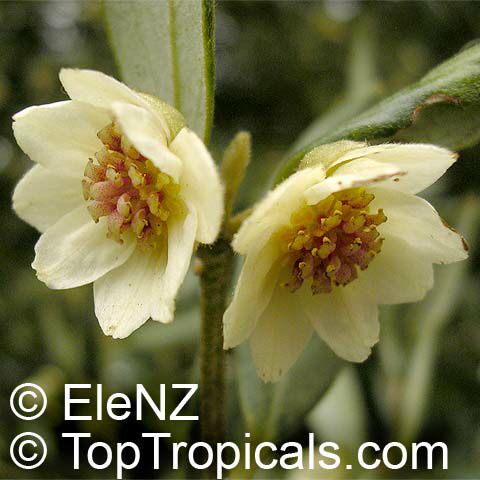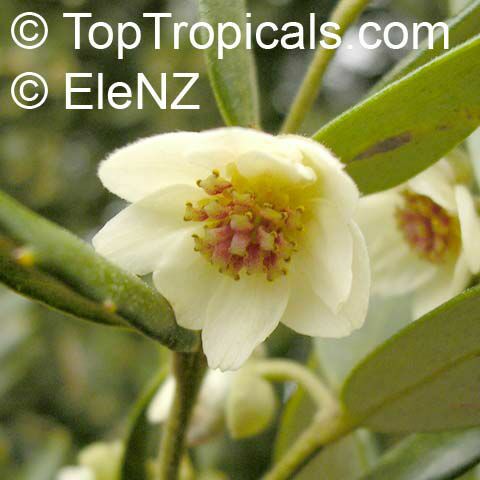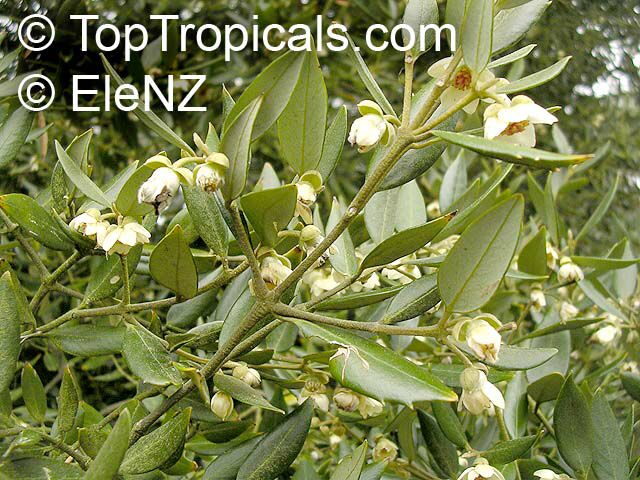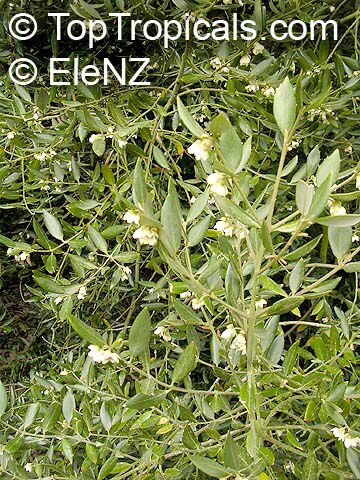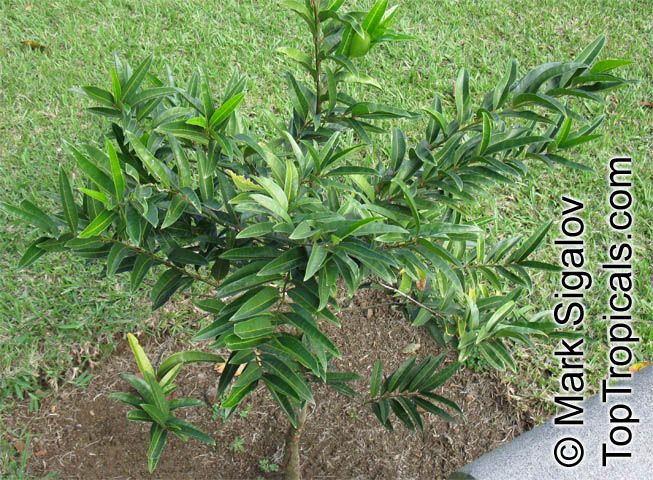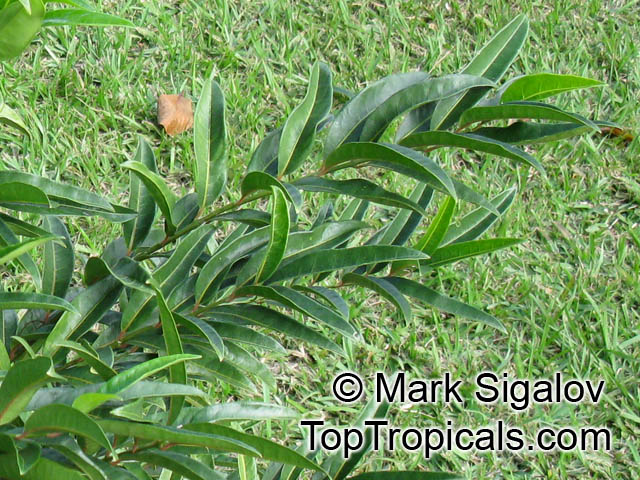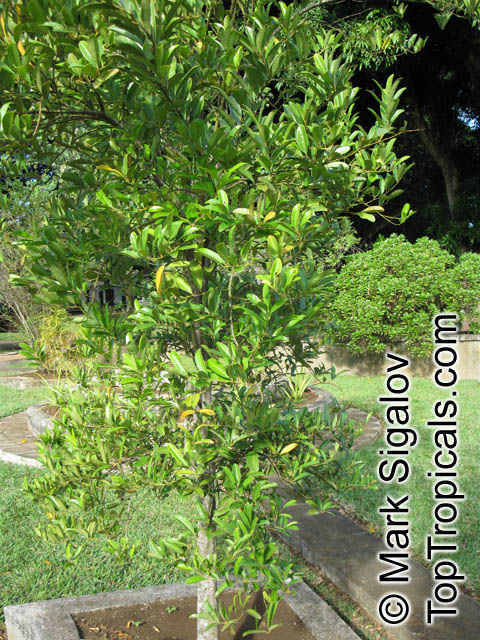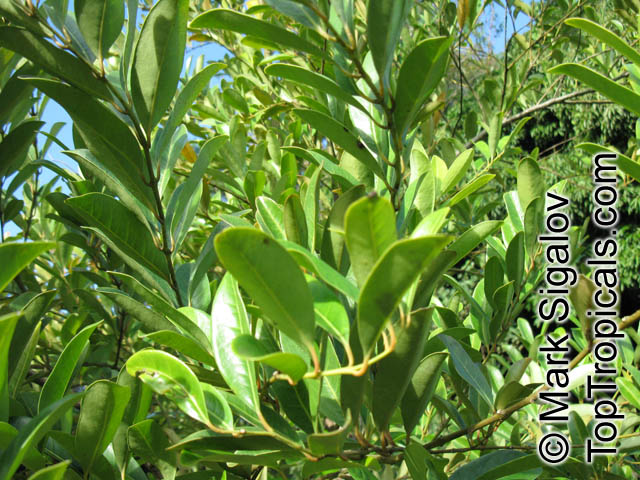Monimiaceae - Botanical Family
Top Tropicals Plant Encyclopedia
| Number of plants found: 2 |
Botanical name: Atherosperma moschatum
Common name: Black Sassafras
Family: Monimiaceae
Origin: Australia







Atherosperma moschatum is said to be a valuable ethnomedical plant. The species is found growing in wet coastal and mountain forests, from east Australia to New Zealand. It's grows to a height of 10-20 feet and is a hardy in USDA Zones 8-11. It has a dense crown of glossy, dark green leaves and elliptic to oblong in shape, finely toothed and aromatic when crushed.
The plant produces fragrant, white to pale off-white flowers arranged in umbels consisting of male and female flowers. These appear in late winter or early spring, followed by spherical, edible purple-black or blue-black fruit in summer.
It is essential to provide the plant with a moist, humus-rich soil and semi-shade to shade. This tree prefers full sun but can tolerate some semi-shade in hot climates. Regular watering is important and be sure not to let the soil dry out in between watering.
In cold regions, it can be grown in pots, as long as you make sure to provide the rootball with a good layer of insulation in colder seasons. Ensure your pot is a heavy material that will not be damaged when frosty and protect it. Give the plant a sheltered spot, making sure that it does not become exposed to winds.
Atherosperma moschatum has a range of toxins present in its bark and leaves, so it is considered to be a mildly poisonous or mildly toxic plant. All parts of the plant should be kept safely away from children and animals.
Botanical name: Tambourissa sp.
Common name: Bois Tambour
Family: Monimiaceae
Origin: Mauritius






Tambourissa sp. is native to Mauritius, a small island in the Indian Ocean, but the tree has become quite popular in Mediterranean countries, due to its striking beauty. This species is a big tree, growing taller than 20 feet, though some specimens are known to reach 30 feet. The plant grows in an upright position with an umbrella-like crown that creates an incredibly picturesque sight when the red, crimson and vinous flowers blossom.
The tree is quite versatile in the sense that it can be grown in full sun or partial shade, making it highly recommendable for outdoor landscaping projects. But it can also be grown in containers, thus giving the possibility of having a striking ornamental tree inside the home.
The flowers are highly attractive to butterflies and hummingbirds, as well as to humans, being known for their sweet aroma. This tree has been used for ethnomedical purposes in the past, such as for the treatment of certain skin conditions and for relieving sore throats.
Tambourissa sp. is adaptable to different climates and cold weather, though it is generally recommended for USDA Zone 9-11. In cold regions, the plant needs to be grown in pots and taken inside when temperatures drop. Special care should be taken to make sure that the soil is kept evenly moist but not waterlogged and that the pot has adequate drainage. During winter, fertilization should be reduced significantly, to prevent over-stimulating the new growth which could be damaged by cold weather.
Use link to repeat this search:
https://toptropicals.com/cgi-bin/garden_catalog/cat.cgi?search_op=and&keyword_op=and&language=e&family=Monimiaceae&number=10
&no_change_lang=1&user=tt&sale=1&first=0
